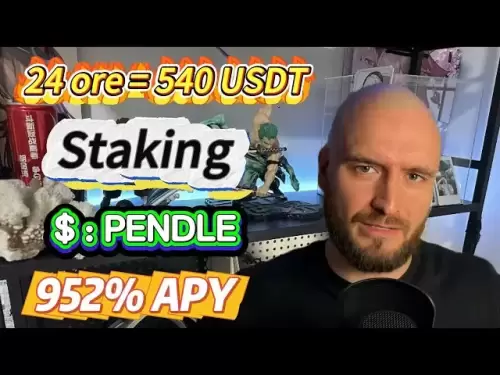-
 Bitcoin
Bitcoin $108,165.4587
0.78% -
 Ethereum
Ethereum $2,456.3517
1.15% -
 Tether USDt
Tether USDt $1.0003
0.00% -
 XRP
XRP $2.1934
0.05% -
 BNB
BNB $650.0935
0.52% -
 Solana
Solana $151.3905
2.69% -
 USDC
USDC $0.9998
0.00% -
 TRON
TRON $0.2751
-0.32% -
 Dogecoin
Dogecoin $0.1640
0.87% -
 Cardano
Cardano $0.5631
0.57% -
 Hyperliquid
Hyperliquid $38.7115
4.69% -
 Bitcoin Cash
Bitcoin Cash $493.1868
-0.39% -
 Sui
Sui $2.8217
3.61% -
 Chainlink
Chainlink $13.3994
2.08% -
 UNUS SED LEO
UNUS SED LEO $9.1632
0.94% -
 Avalanche
Avalanche $18.0318
1.97% -
 Stellar
Stellar $0.2388
0.35% -
 Toncoin
Toncoin $2.8763
1.41% -
 Shiba Inu
Shiba Inu $0.0...01160
1.59% -
 Litecoin
Litecoin $86.6393
1.29% -
 Hedera
Hedera $0.1485
0.16% -
 Monero
Monero $315.7948
1.56% -
 Polkadot
Polkadot $3.4240
1.88% -
 Bitget Token
Bitget Token $4.6314
-0.44% -
 Dai
Dai $0.9998
-0.01% -
 Ethena USDe
Ethena USDe $1.0002
-0.01% -
 Uniswap
Uniswap $7.2110
2.59% -
 Aave
Aave $270.6087
6.07% -
 Pi
Pi $0.5350
0.52% -
 Pepe
Pepe $0.0...09545
1.26%
How to operate OKX's asset transfer function?
OKX's asset transfer function allows internal transfers, withdrawals, and deposits, ensuring efficient and secure management of your cryptocurrencies.
Apr 02, 2025 at 10:35 pm
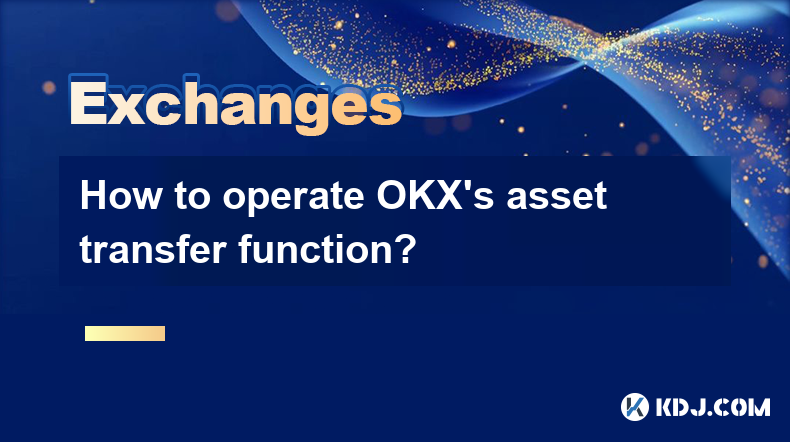
Operating OKX's asset transfer function is essential for managing your cryptocurrencies effectively. Whether you are moving funds between different accounts or sending assets to external wallets, understanding the process can significantly enhance your trading experience. In this article, we will explore the step-by-step process of using OKX's asset transfer function, discuss the different types of transfers available, and provide tips to ensure your transactions are secure and efficient. Let's dive in to make the most out of OKX's robust platform.
Understanding OKX's Asset Transfer Options
OKX offers several types of asset transfers to cater to different user needs. The primary categories include internal transfers, withdrawals, and deposits. Internal transfers allow you to move funds between your OKX accounts, such as from your spot wallet to your futures wallet. Withdrawals enable you to send your assets to external wallets, while deposits are used to add funds to your OKX account from external sources. Each type of transfer has its own set of procedures and security measures, which we will explore in detail.
Step-by-Step Guide to Internal Transfers
Internal transfers within OKX are straightforward but require attention to detail to ensure accuracy. Here's how to perform an internal transfer:
- Log in to your OKX account and navigate to the 'Assets' section.
- Select 'Transfer' from the menu. You will be directed to the transfer page.
- Choose the source wallet and the destination wallet from the dropdown menus. For example, transferring from your spot wallet to your futures wallet.
- Enter the amount you wish to transfer. Double-check the amount to avoid errors.
- Click 'Submit' to initiate the transfer. OKX will process the transfer almost instantly, and you will receive a confirmation once it is complete.
How to Withdraw Assets from OKX
Withdrawing assets from OKX involves sending your cryptocurrencies to an external wallet. Follow these steps to ensure a smooth withdrawal process:
- Log in to your OKX account and go to the 'Assets' section.
- Click on 'Withdraw' and select the cryptocurrency you want to withdraw.
- Enter the destination address of your external wallet. Make sure this address is correct to prevent loss of funds.
- Specify the amount you want to withdraw. OKX may charge a withdrawal fee, so consider this when deciding on the amount.
- Some cryptocurrencies require additional network fees. If applicable, enter the desired network fee.
- Review all the details carefully, then click 'Submit' to initiate the withdrawal. OKX will process your request, and you will receive a confirmation once the withdrawal is complete.
Depositing Assets to OKX
Depositing assets to your OKX account is the process of adding funds from an external source. Here's how to do it:
- Log in to your OKX account and navigate to the 'Assets' section.
- Click on 'Deposit' and select the cryptocurrency you wish to deposit.
- OKX will provide you with a deposit address. Copy this address and use it to send funds from your external wallet.
- Some cryptocurrencies may require a memo or tag. If applicable, make sure to include this in your transaction.
- Send the funds to the provided deposit address. The time it takes for the funds to appear in your OKX account depends on the blockchain's processing speed.
- Once the transaction is confirmed on the blockchain, the funds will be credited to your OKX account.
Security Measures for Asset Transfers
Ensuring the security of your asset transfers is crucial. Here are some tips to keep your transactions safe:
- Use Two-Factor Authentication (2FA): Enable 2FA on your OKX account to add an extra layer of security.
- Verify Addresses: Always double-check the destination address before initiating a withdrawal. A single mistake can lead to irreversible loss of funds.
- Use Secure Networks: Avoid conducting transfers over public Wi-Fi. Use a secure, private internet connection to reduce the risk of hacking.
- Monitor Your Transactions: Regularly check your transaction history and account balances to detect any unauthorized activities promptly.
- Keep Software Updated: Ensure that your devices and any software you use for crypto transactions are up-to-date to protect against vulnerabilities.
Common Issues and Troubleshooting
Despite OKX's user-friendly interface, users may occasionally encounter issues with asset transfers. Here are some common problems and how to troubleshoot them:
- Delayed Transactions: If your transaction is taking longer than expected, check the blockchain explorer for the status of your transaction. Sometimes, network congestion can cause delays.
- Incorrect Address: If you enter the wrong address during a withdrawal, the funds may be lost. Always double-check the address before submitting the transaction.
- Insufficient Balance: Ensure you have enough balance in your account to cover the transaction amount and any associated fees.
- Network Fee Issues: For some cryptocurrencies, you need to set a network fee. If the fee is too low, the transaction may not be processed. Adjust the fee if necessary and resubmit the transaction.
- Customer Support: If you encounter persistent issues, reach out to OKX's customer support for assistance. They can provide guidance and help resolve complex problems.
Maximizing Efficiency in Asset Transfers
To maximize the efficiency of your asset transfers on OKX, consider the following strategies:
- Batch Transfers: If you need to transfer multiple assets, consider doing so in batches to save time and reduce the number of transactions.
- Optimal Timing: Be aware of peak times on the blockchain, as high traffic can lead to delays. Plan your transfers during off-peak hours if possible.
- Fee Management: Understand the fee structures for different cryptocurrencies and adjust your transaction fees accordingly to balance speed and cost.
- Use of API: For advanced users, OKX offers an API that can automate and streamline your asset transfers. This can be particularly useful for traders and institutional investors.
- Regular Audits: Conduct regular audits of your transactions to ensure everything is accounted for and to identify any potential issues early.
Understanding OKX's Fee Structure
OKX charges various fees for asset transfers, which can impact your overall trading costs. Here’s a breakdown of the common fees you might encounter:
- Withdrawal Fees: OKX charges a fee for withdrawing assets to external wallets. The fee varies depending on the cryptocurrency and the network used.
- Deposit Fees: Most deposits to OKX are free, but some networks might charge a small fee.
- Internal Transfer Fees: Internal transfers between OKX wallets are usually free, but always check for any updates or changes in policy.
- Network Fees: When withdrawing certain cryptocurrencies, you may need to set a network fee. This fee is paid to the blockchain network to process your transaction.
Understanding these fees can help you plan your transfers more effectively and minimize costs.
Comparing OKX with Other Exchanges
When choosing a cryptocurrency exchange, it's beneficial to compare OKX with other platforms. Here are some key points to consider:
- User Interface: OKX offers a user-friendly interface, making it easier for both beginners and experienced traders to navigate.
- Security: OKX implements robust security measures, including 2FA, cold storage, and regular security audits.
- Fees: OKX's fee structure is competitive, but it's essential to compare it with other exchanges like Binance, Coinbase, and Kraken to find the best rates for your needs.
- Asset Variety: OKX supports a wide range of cryptocurrencies, which can be an advantage for traders looking to diversify their portfolios.
- Customer Support: OKX provides responsive customer support, which can be crucial when dealing with transaction issues or other concerns.
Advanced Features for Asset Management
For users looking to leverage more advanced features, OKX offers several tools to enhance asset management:
- Sub-Accounts: OKX allows you to create sub-accounts, which can be useful for managing different trading strategies or separating personal and business assets.
- API Integration: The OKX API enables automated trading and asset management, allowing you to execute complex strategies without manual intervention.
- Staking and Lending: OKX offers staking and lending options, allowing you to earn passive income on your assets while they are not being actively traded.
- Portfolio Management: Use OKX's portfolio management tools to track your asset performance, analyze your holdings, and make informed decisions.
Future Developments and OKX's Roadmap
OKX continually works on improving its platform and adding new features. Here are some of the developments to look out for:
- Enhanced Security Protocols: OKX plans to introduce even more advanced security measures to protect user assets.
- New Asset Listings: OKX regularly adds new cryptocurrencies to its platform, expanding the options available to traders.
- Decentralized Finance (DeFi) Integration: OKX is exploring ways to integrate DeFi services, which could offer users more opportunities for yield farming and liquidity provision.
- User Experience Improvements: OKX aims to enhance its user interface and overall user experience, making it easier for traders to manage their assets effectively.
Common Questions Related to OKX's Asset Transfer Function
Q: How long does an internal transfer take on OKX?
A: Internal transfers on OKX are typically processed instantly. Once you submit the transfer, you should see the funds reflected in the destination wallet almost immediately.
Q: What should I do if my withdrawal from OKX is delayed?
A: If your withdrawal is delayed, check the status of the transaction on the relevant blockchain explorer. If there are no issues on the blockchain, contact OKX customer support for assistance.
Q: Are there any fees for internal transfers on OKX?
A: Generally, internal transfers within OKX are free. However, it's always a good idea to check OKX's fee schedule for any updates or changes.
Q: Can I cancel a withdrawal after it has been submitted?
A: Once a withdrawal is submitted and confirmed, it cannot be canceled. Always double-check the details before submitting the transaction.
Q: How can I ensure the security of my asset transfers on OKX?
A: To ensure the security of your asset transfers, enable two-factor authentication (2FA), use secure internet connections, double-check all transaction details, and keep your software updated. Regularly monitor your account for any unauthorized activities.
Disclaimer:info@kdj.com
The information provided is not trading advice. kdj.com does not assume any responsibility for any investments made based on the information provided in this article. Cryptocurrencies are highly volatile and it is highly recommended that you invest with caution after thorough research!
If you believe that the content used on this website infringes your copyright, please contact us immediately (info@kdj.com) and we will delete it promptly.
- Bitcoin: A Lifeline Against Authoritarian Regimes and a Strategic Asset?
- 2025-06-29 22:30:12
- Elementary, My Dear Collector: Sherlock Holmes 50p Coins on eBay!
- 2025-06-29 22:30:12
- New Coin Disappearing Fast: The Price Impact of Angry Pepe Fork
- 2025-06-29 22:35:12
- Tron vs. Dogecoin: A Cryptocurrency Showdown in 2025
- 2025-06-29 22:50:12
- Ethereum, DeFi, and Cryptocurrency: Navigating the Evolving Landscape
- 2025-06-29 23:07:14
- New Coins, Gaming, and Shiba Inu: What's Hot in the Crypto Space?
- 2025-06-29 23:11:47
Related knowledge
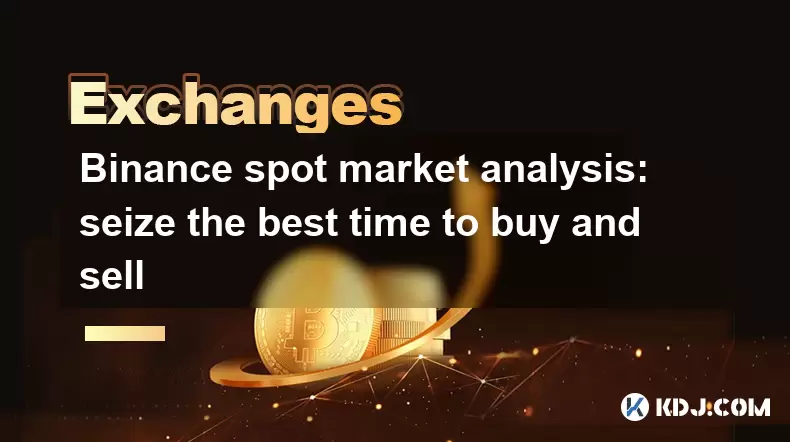
Binance spot market analysis: seize the best time to buy and sell
Jun 19,2025 at 04:56pm
Understanding the Binance Spot MarketThe Binance spot market is one of the most popular platforms for cryptocurrency trading globally. It allows users to trade digital assets at current market prices, making it essential for traders aiming to buy low and sell high. Unlike futures or margin trading, spot trading involves direct ownership of the asset aft...
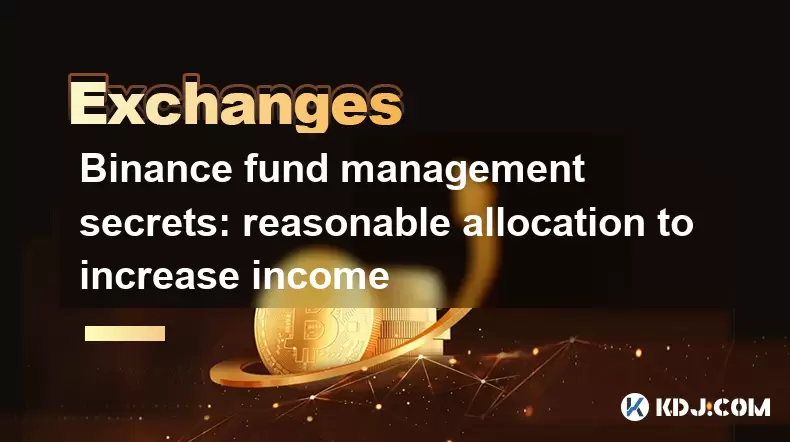
Binance fund management secrets: reasonable allocation to increase income
Jun 22,2025 at 02:29pm
Understanding Binance Fund ManagementBinance fund management involves strategic allocation of your cryptocurrency assets to optimize returns while managing risk. The key to successful fund management lies in understanding how different investment options on the Binance platform can be utilized to create a diversified portfolio. This includes spot tradin...
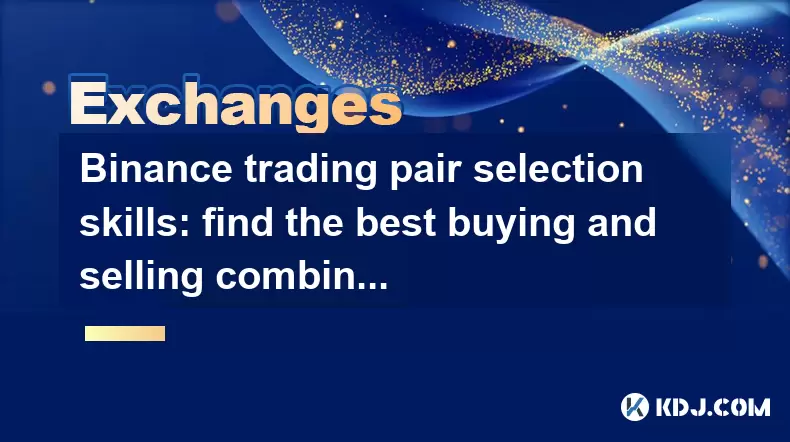
Binance trading pair selection skills: find the best buying and selling combination
Jun 23,2025 at 02:49am
Understanding the Basics of Trading Pairs on BinanceBefore diving into trading pair selection skills, it's essential to understand what a trading pair is. On Binance, a trading pair refers to two cryptocurrencies that can be traded against each other. For example, BTC/USDT means Bitcoin is being traded against Tether. Each trading pair has its own liqui...
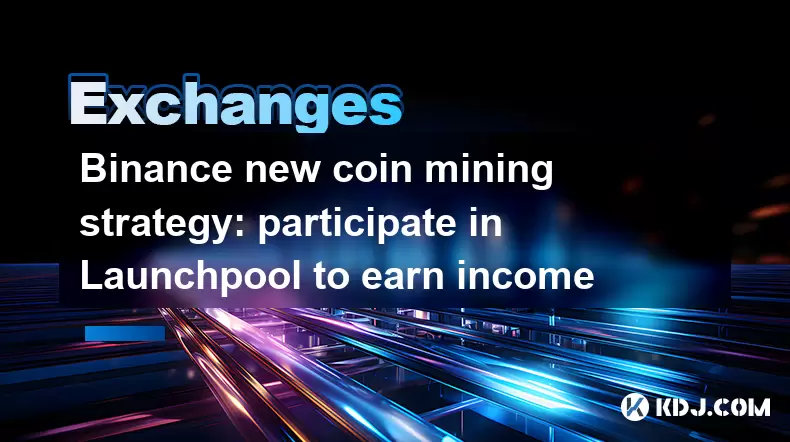
Binance new coin mining strategy: participate in Launchpool to earn income
Jun 23,2025 at 11:56am
What is Binance Launchpool and how does it work?Binance Launchpool is a feature introduced by the world’s largest cryptocurrency exchange, Binance, to allow users to earn new tokens through staking. This platform enables users to stake their existing cryptocurrencies (such as BNB, BUSD, or other supported assets) in exchange for newly launched tokens. T...
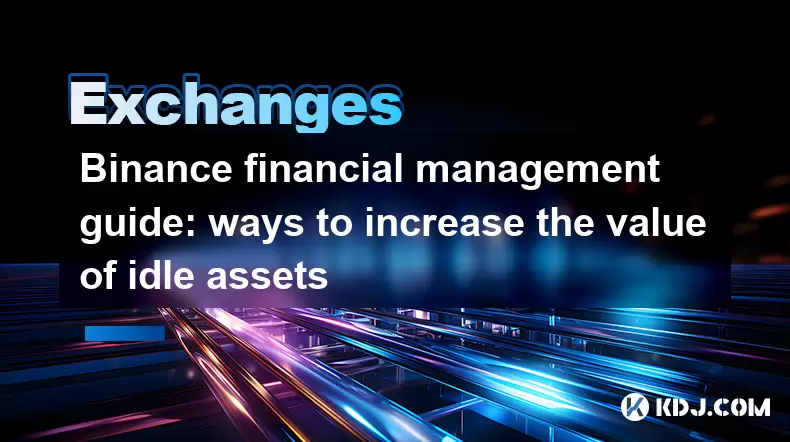
Binance financial management guide: ways to increase the value of idle assets
Jun 19,2025 at 11:22pm
Understanding Idle Assets in the Cryptocurrency SpaceIn the fast-paced world of cryptocurrency, idle assets refer to digital currencies that are not actively being used for trading, staking, or yield farming. Holding these funds in a wallet without utilizing them means missing out on potential growth opportunities. Binance, as one of the leading platfor...
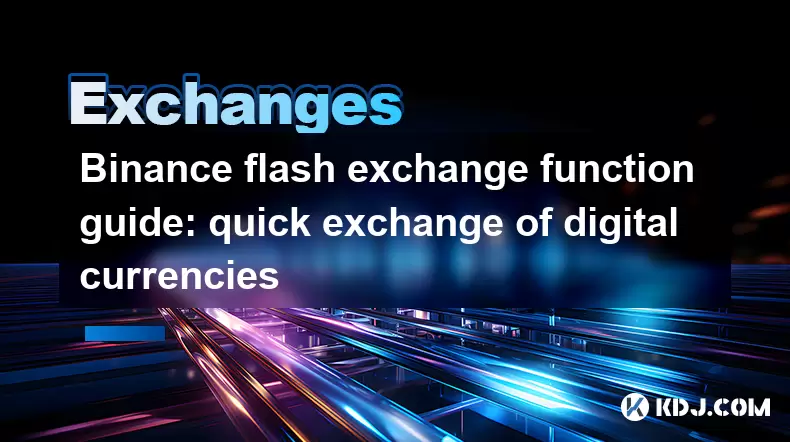
Binance flash exchange function guide: quick exchange of digital currencies
Jun 23,2025 at 12:29pm
What is the Binance Flash Exchange Function?The Binance Flash Exchange function is a powerful tool designed to allow users to instantly swap between supported cryptocurrencies without the need for placing traditional buy/sell orders. This feature simplifies the trading process by offering a direct exchange mechanism, eliminating the requirement to conve...

Binance spot market analysis: seize the best time to buy and sell
Jun 19,2025 at 04:56pm
Understanding the Binance Spot MarketThe Binance spot market is one of the most popular platforms for cryptocurrency trading globally. It allows users to trade digital assets at current market prices, making it essential for traders aiming to buy low and sell high. Unlike futures or margin trading, spot trading involves direct ownership of the asset aft...

Binance fund management secrets: reasonable allocation to increase income
Jun 22,2025 at 02:29pm
Understanding Binance Fund ManagementBinance fund management involves strategic allocation of your cryptocurrency assets to optimize returns while managing risk. The key to successful fund management lies in understanding how different investment options on the Binance platform can be utilized to create a diversified portfolio. This includes spot tradin...

Binance trading pair selection skills: find the best buying and selling combination
Jun 23,2025 at 02:49am
Understanding the Basics of Trading Pairs on BinanceBefore diving into trading pair selection skills, it's essential to understand what a trading pair is. On Binance, a trading pair refers to two cryptocurrencies that can be traded against each other. For example, BTC/USDT means Bitcoin is being traded against Tether. Each trading pair has its own liqui...

Binance new coin mining strategy: participate in Launchpool to earn income
Jun 23,2025 at 11:56am
What is Binance Launchpool and how does it work?Binance Launchpool is a feature introduced by the world’s largest cryptocurrency exchange, Binance, to allow users to earn new tokens through staking. This platform enables users to stake their existing cryptocurrencies (such as BNB, BUSD, or other supported assets) in exchange for newly launched tokens. T...

Binance financial management guide: ways to increase the value of idle assets
Jun 19,2025 at 11:22pm
Understanding Idle Assets in the Cryptocurrency SpaceIn the fast-paced world of cryptocurrency, idle assets refer to digital currencies that are not actively being used for trading, staking, or yield farming. Holding these funds in a wallet without utilizing them means missing out on potential growth opportunities. Binance, as one of the leading platfor...

Binance flash exchange function guide: quick exchange of digital currencies
Jun 23,2025 at 12:29pm
What is the Binance Flash Exchange Function?The Binance Flash Exchange function is a powerful tool designed to allow users to instantly swap between supported cryptocurrencies without the need for placing traditional buy/sell orders. This feature simplifies the trading process by offering a direct exchange mechanism, eliminating the requirement to conve...
See all articles





















